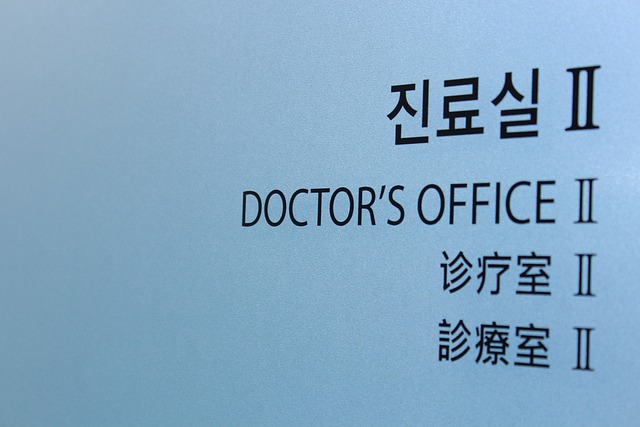PTSD treatment involves a multi-faceted approach combining evidence-based therapies like CBT and EMDR with innovative techniques such as VR exposure therapy and mindfulness practices. Contemporary care plans integrate holistic practices like yoga, meditation, and lifestyle changes to address the complex symptoms of PTSD. Support groups play a crucial role in providing community and validation, while structured routines enhance emotional regulation and overall well-being, offering comprehensive solutions for effective long-term PTSD management.
Post-traumatic stress disorder (PTSD) is a complex mental health condition that requires effective symptom management. This comprehensive guide explores various therapeutic approaches to help individuals navigate and overcome the challenges of PTSD. From traditional talk therapies to innovative contemporary methods, we delve into proven strategies. The article covers mindfulness practices, peer support groups, and lifestyle modifications, offering a holistic view of PTSD treatment. Discover how these techniques empower individuals to manage symptoms, find healing, and reclaim their lives.
Understanding PTSD: A Comprehensive Overview

Post-Traumatic Stress Disorder (PTSD) is a complex mental health condition that can significantly impact individuals’ daily lives. It often develops after exposure to traumatic events, such as military combat, accidents, natural disasters, or severe personal assaults. The condition is characterized by intense and distressing memories of the trauma, known as flashbacks or intrusive recollections, which can be triggered by sensory cues or reminders related to the event.
PTSD treatment focuses on helping individuals manage these symptoms and regain control over their lives. Through various therapeutic approaches, such as cognitive-behavioural therapy (CBT) and eye movement desensitization and reprocessing (EMDR), patients learn coping strategies to navigate distressing thoughts and emotions. These therapies aim to reduce the impact of traumatic memories, promote positive coping mechanisms, and improve overall functioning. Effective PTSD treatment empowers individuals to process their experiences, gain a sense of control, and lead fulfilling lives despite the challenges posed by this disorder.
Traditional Therapies for PTSD Management

Traditional therapies play a pivotal role in managing Post-Traumatic Stress Disorder (PTSD). Cognitive Behavioral Therapy (CBT) is one of the most common and effective approaches, focusing on identifying and changing negative thought patterns and behaviors triggered by traumatic memories. Exposure therapy, a subset of CBT, involves gradual exposure to traumatic reminders in a safe environment, helping individuals process and overcome their fears.
Other traditional therapies include Eye Movement Desensitization and Reprocessing (EMDR), which facilitates the processing of traumatic memories through bilateral stimulation like eye movements, and Prolonged Exposure Therapy, where patients are encouraged to confront and stay in situations that evoke anxiety until symptoms subside. These therapies offer structured frameworks for individuals to process trauma and develop healthier coping mechanisms, ultimately enhancing their quality of life.
Innovative Approaches in Contemporary PTSD Treatment

In the realm of PTSD treatment, contemporary therapies are constantly evolving, offering innovative approaches that go beyond traditional methods. One notable advancement is the integration of technology in therapy sessions, such as Virtual Reality (VR) exposure therapy, which allows individuals to confront traumatic memories in a controlled and safe digital environment. This modern technique has shown remarkable effectiveness in desensitizing patients to triggers, helping them manage symptoms more effectively.
Additionally, emerging research highlights the benefits of mind-body practices like yoga and meditation tailored for PTSD sufferers. These holistic approaches focus on regulating emotions, reducing anxiety, and improving overall well-being. By combining evidence-based psychological treatments with alternative therapies, mental health professionals are creating comprehensive care plans that cater to the unique needs of each individual, revolutionizing the way we manage PTSD symptoms in today’s digital age.
The Role of Mindfulness and Relaxation Techniques

Mindfulness and relaxation techniques have emerged as powerful tools in the arsenal of PTSD treatment. These practices encourage individuals to focus on the present moment, acknowledging and accepting their emotions and sensations without judgment. By cultivating a non-reactive mindset, those dealing with post-traumatic stress can reduce the intensity of intrusive thoughts and flashbacks, which are hallmarks of PTSD.
Through regular practice, mindfulness meditation, deep breathing exercises, and progressive muscle relaxation help individuals develop a deeper sense of self-awareness and emotional regulation. These techniques enable them to respond rather than react to stressful triggers, fostering a greater sense of control over their symptoms. Research indicates that integrating mindfulness into PTSD treatment protocols can significantly enhance therapeutic outcomes, offering a promising approach for managing this complex condition.
Support Groups and Peer Connection in Healing

Support groups offer a powerful tool for individuals navigating PTSD treatment. Connecting with others who have experienced similar traumas creates a sense of community and belonging, fostering an environment where healing can begin. Within these groups, members share their stories, providing validation and understanding that can be incredibly therapeutic. Peer support is a vital aspect of PTSD management as it encourages individuals to express their feelings, fears, and coping strategies in a safe space, thereby normalizing their experiences.
These connections go beyond words; they provide a network of peers who become allies on the journey to recovery. Through shared experiences, members learn that they are not alone in their struggles, reducing feelings of isolation often associated with PTSD. Support groups empower individuals by offering practical advice and strategies for managing symptoms, enhancing coping mechanisms, and promoting overall well-being during the PTSD treatment process.
Lifestyle Changes for Long-Term PTSD Symptom Reduction

Making sustainable lifestyle changes can significantly contribute to long-term PTSD symptom reduction. This includes adopting a balanced diet rich in nutrients known to support brain health and reduce inflammation, as evidenced by research on PTSD treatment. Regular physical activity, such as yoga or walking, has been shown to lower anxiety and depression levels while improving sleep quality—all of which are common challenges for those with PTSD. Establishing a consistent sleep routine is paramount; adequate rest allows the brain to process traumatic memories more effectively.
Additionally, mindfulness practices like meditation and deep breathing exercises can help individuals manage their symptoms by promoting emotional regulation and reducing stress responses. Engaging in creative outlets, spending time in nature, or connecting with supportive communities can also foster resilience and enhance overall well-being. These lifestyle modifications, when integrated into daily routines, offer a holistic approach to PTSD treatment, complementing traditional therapies for comprehensive symptom management.
